JavaScript frameworks have been a cornerstone of modern web development, enabling developers to build dynamic and feature-rich applications. As we step into 2024, the landscape of JavaScript frameworks continues to evolve, offering new possibilities for both novice and experienced developers. In this blog, we’ll explore the top 10 JavaScript frameworks for web development in 2024, highlighting their key features, use cases, and why they stand out.
1. React.js
Overview: React.js, developed by Facebook, remains one of the most popular JavaScript frameworks for building user interfaces, especially single-page applications. React’s component-based architecture allows developers to build reusable UI components, making development efficient and scalable.
Key Features:
- Virtual DOM for improved performance.
- One-way data binding for predictable state management.
- Extensive ecosystem with libraries like Redux and Context API for state management.
- Strong community support and a wealth of resources.
Use Cases: Ideal for building complex user interfaces, dynamic single-page applications, and mobile applications with React Native.
2. Vue.js
Overview: Vue.js has grown rapidly due to its simplicity and flexibility. It’s perfect for developers who want an easy learning curve without sacrificing performance or functionality. Vue.js provides a progressive framework, meaning it can be used for building from simple to complex applications.
Key Features:
- Two-way data binding.
- Virtual DOM and reactive components.
- Easy integration with other libraries and existing projects.
- Comprehensive documentation and active community support.
Use Cases: Best suited for building interactive web interfaces, single-page applications, and integrating into existing projects for incremental updates.
3. Angular
Overview: Developed by Google, Angular is a comprehensive framework for building dynamic, client-side applications with HTML, CSS, and JavaScript/TypeScript. Angular’s strong typing with TypeScript makes it a powerful choice for large-scale applications.
Key Features:
- Two-way data binding.
- Dependency injection for better service management.
- Powerful templating and component-based architecture.
- Extensive toolset including Angular CLI for efficient development.
Use Cases: Ideal for enterprise-grade applications, large-scale projects, and single-page applications that require robust structure and maintainability.
4. Svelte
Overview: Svelte offers a new approach to building web applications by compiling components into highly optimized vanilla JavaScript at build time. This eliminates the need for a virtual DOM, resulting in faster performance and smaller bundle sizes.
Key Features:
- No virtual DOM—compiled to vanilla JavaScript.
- Reactive declarations and easy-to-understand syntax.
- Smaller bundle sizes and improved performance.
- Simple state management with built-in stores.
Use Cases: Great for building high-performance web apps, lightweight applications, and scenarios where bundle size and speed are critical.
5. Next.js
Overview: Next.js, a React-based framework, has gained traction for building server-rendered React applications. It supports static site generation, server-side rendering, and client-side rendering, making it a versatile choice for modern web development.
Key Features:
- Hybrid static and server rendering.
- API routes to build backend APIs.
- Image optimization and built-in support for CSS and Sass.
- Seamless integration with Vercel for deployment.
Use Cases: Ideal for SEO-friendly applications, e-commerce sites, and blogs that require fast load times and server-side rendering.
6. Nuxt.js
Overview: Nuxt.js is a framework built on top of Vue.js, offering a powerful and flexible environment for building server-side rendered (SSR) and static websites. It simplifies the development of universal Vue applications.
Key Features:
- Server-side rendering and static site generation.
- Automatic code splitting and optimized performance.
- Modular architecture and extensive module ecosystem.
- Easy integration with Vue and third-party services.
Use Cases: Perfect for building performant, SEO-friendly Vue applications, server-rendered applications, and progressive web apps (PWAs).
7. Express.js
Overview: While not a front-end framework, Express.js is a minimalist back-end framework for Node.js, known for its simplicity and flexibility. It’s often used in combination with front-end frameworks to build full-stack applications.
Key Features:
- Minimalist framework with a strong routing API.
- Middleware architecture for easy request/response handling.
- Robust ecosystem with many plugins and extensions.
- Seamless integration with databases and front-end technologies.
Use Cases: Best suited for building RESTful APIs, server-side applications, and full-stack JavaScript applications with front-end frameworks like React or Angular.
8. Ember.js
Overview: Ember.js is a robust framework designed for building ambitious web applications. It provides a convention-over-configuration philosophy, reducing the need for repetitive coding and allowing developers to focus on building features.
Key Features:
- Convention-over-configuration approach.
- Ember CLI for scaffolding and building applications.
- Strong routing system and Ember Data for data management.
- Built-in testing and development tools.
Use Cases: Ideal for complex web applications, single-page applications, and projects that benefit from a highly opinionated structure.
9. Gatsby.js
Overview: Gatsby.js is a React-based, open-source framework that allows developers to build fast static websites and apps. It uses GraphQL for data management and is optimized for performance and SEO.
Key Features:
- Static site generation for ultra-fast performance.
- Uses GraphQL for querying data.
- Large plugin ecosystem for extending functionality.
- Built-in image optimization and PWA support.
Use Cases: Best for building static websites, blogs, documentation sites, and e-commerce platforms that prioritize speed and SEO.
10. Meteor.js
Overview: Meteor.js is a full-stack platform that allows for rapid development of web and mobile applications in pure JavaScript. It offers an integrated environment where front-end, back-end, and database management are handled seamlessly.
Key Features:
- Full-stack reactivity with real-time updates.
- Seamless integration with MongoDB.
- Built-in package manager and easy deployment.
- Cross-platform mobile support with Cordova integration.
Use Cases: Suitable for real-time applications, chat apps, collaborative platforms, and apps requiring rapid development and deployment.
Conclusion: Emperor Brains’ Guide to Choosing the Right JavaScript Framework
As the web development landscape evolves, choosing the right JavaScript framework can significantly impact your project’s success. Whether you’re building a simple interactive interface or a complex enterprise-level application, there’s a JavaScript framework tailored to your needs. From the component-driven React.js and Vue.js to the server-rendering powerhouses Next.js and Nuxt.js, each framework offers unique benefits that can accelerate your development process.
At Emperor Brains, we specialize in harnessing the power of these frameworks to build robust, scalable, and innovative web solutions. With our expertise in JavaScript frameworks, we help businesses stay ahead of the curve by delivering high-quality applications that meet modern demands.
For more insights into how these frameworks can transform your web development projects, visit our website at https://emperorbrains.com/ or contact us today. Let Emperor Brains be your trusted partner in navigating the world of web development!

